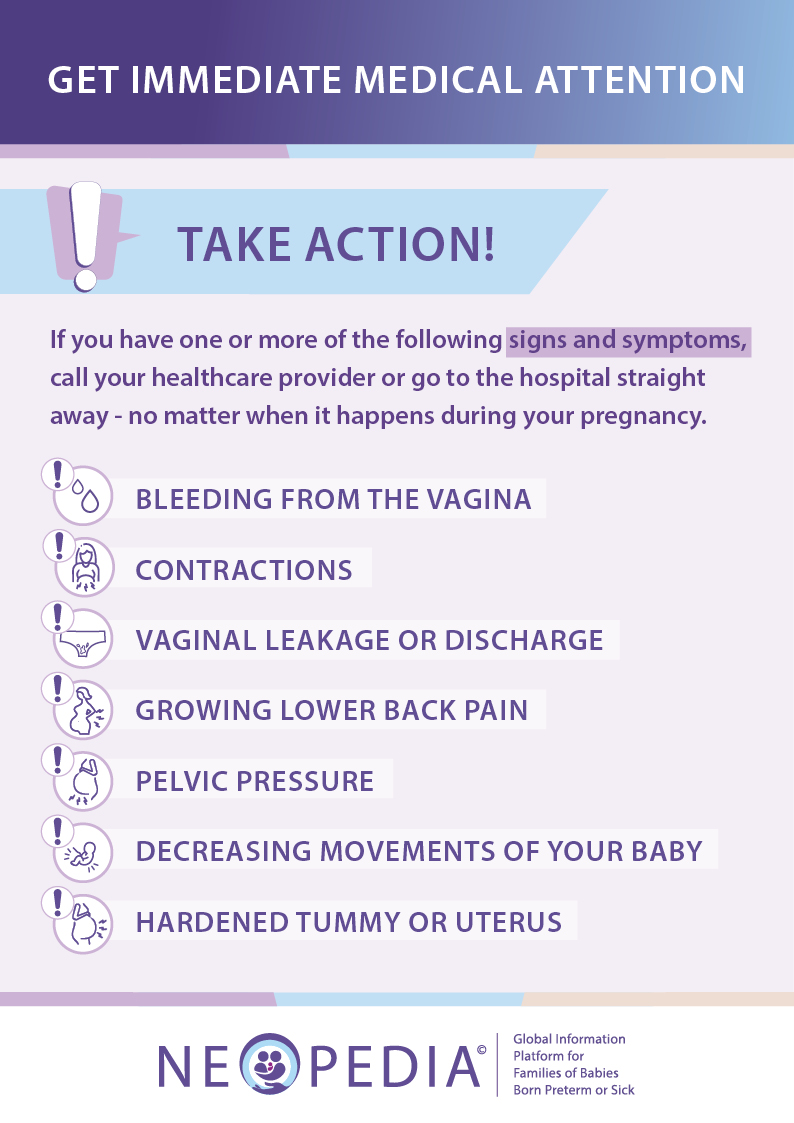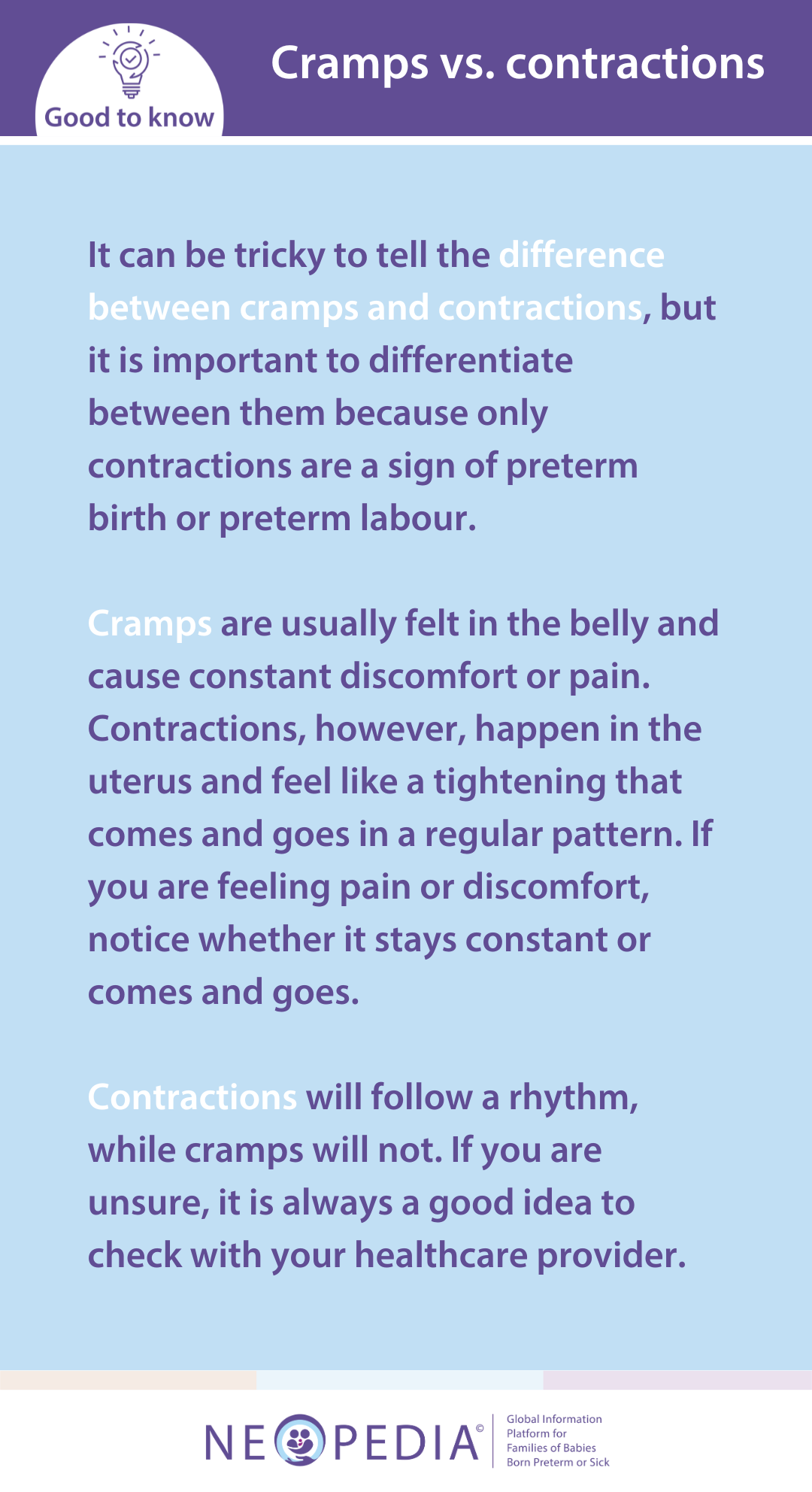
Some warning signs of preterm labor can be hard to tell apart from normal pregnancy symptoms.
If you notice any of these signs or just feel like something is wrong, contact your healthcare provider or go to the hospital right away, no matter when it happens during your pregnancy.
Experiencing preterm labor symptoms does not necessarily mean immediate delivery. Early identification and treatment might prevent preterm birth.
If you experience vaginal bleeding at any point during pregnancy, contact your doctor or clinic immediately. Your antenatal care provider can guide you on what to do next.
Keep track of the details, as this can help your healthcare provider understand the issue. Note the amount and color of any discharge, if you have noticed any clots, and if you are experiencing abdominal pain. If you are bleeding, save your pads or any stained clothing, as this can also be helpful.

Contractions in preterm labor can resemble those at full term but may be less intense, feeling more like discomfort or cramps in your sides or back. Preterm contractions are usually regular, happening every 5, 10, 15, 20, or 30 minutes, and last 40 to 60 seconds. However, some women may have irregular contractions during preterm labor.
It is important to remember that these can sometimes be mistaken for Braxton Hicks contractions, which do not follow a regular pattern.
What are Braxton Hicks contractions?
Braxton Hicks contractions are irregular tightening of the womb during pregnancy, often called false labor or practice contractions. They typically happen in the second or third trimester and can be mistaken for true labor. However, there are ways to tell them apart.
The key difference is that Braxton Hicks contractions are irregular and do not get closer together, whereas true labor contractions are regular and increase in frequency. Braxton Hicks are weak or painless and can stop if you drink water, change position, take a warm bath, shower, or rest, while true labor contractions grow stronger, more painful, and continue despite rest or position changes. If you are worried, always consult your healthcare provider.
You might notice your waters breaking, which could appear as a sudden gush of fluid or a more subtle watery discharge. You may also find your underwear is always damp. Another sign could be an increase in vaginal discharge, which may change in texture, becoming more mucousy or watery. The discharge could also be pink or brown in color.
You may feel lower back pain that spreads to your sides or front. Changing positions while lying down or sitting might not relieve the pain, which could follow a regular pattern or be constant.
Another subtle warning sign of preterm labor might be feeling a sense of pressure or fullness in your pelvic area, back, or thighs. It may feel like your baby is pushing down or as if they could "fall out".
If you notice your baby’s movements are weaker or less frequent than usual, contact your healthcare provider immediately. It is important to inform them if you have any concerns about your baby’s movements. Your concerns are valid, so do not wait until the next day or your next appointment – acting quickly can make a big difference.
Feeling a hard or tight belly can be a sign to look out for as well. Instead of having contractions⍰ that come and go, in case of a hardened stomach or hardened uterus⍰ your belly might feel firm, as if it were under constant pressure and not soft like it usually feels. It will not always be painful, but it can feel uncomfortable. If you notice this sign, reach out to your healthcare provider for advice.

What can you expect when you are being checked for preterm labor?

